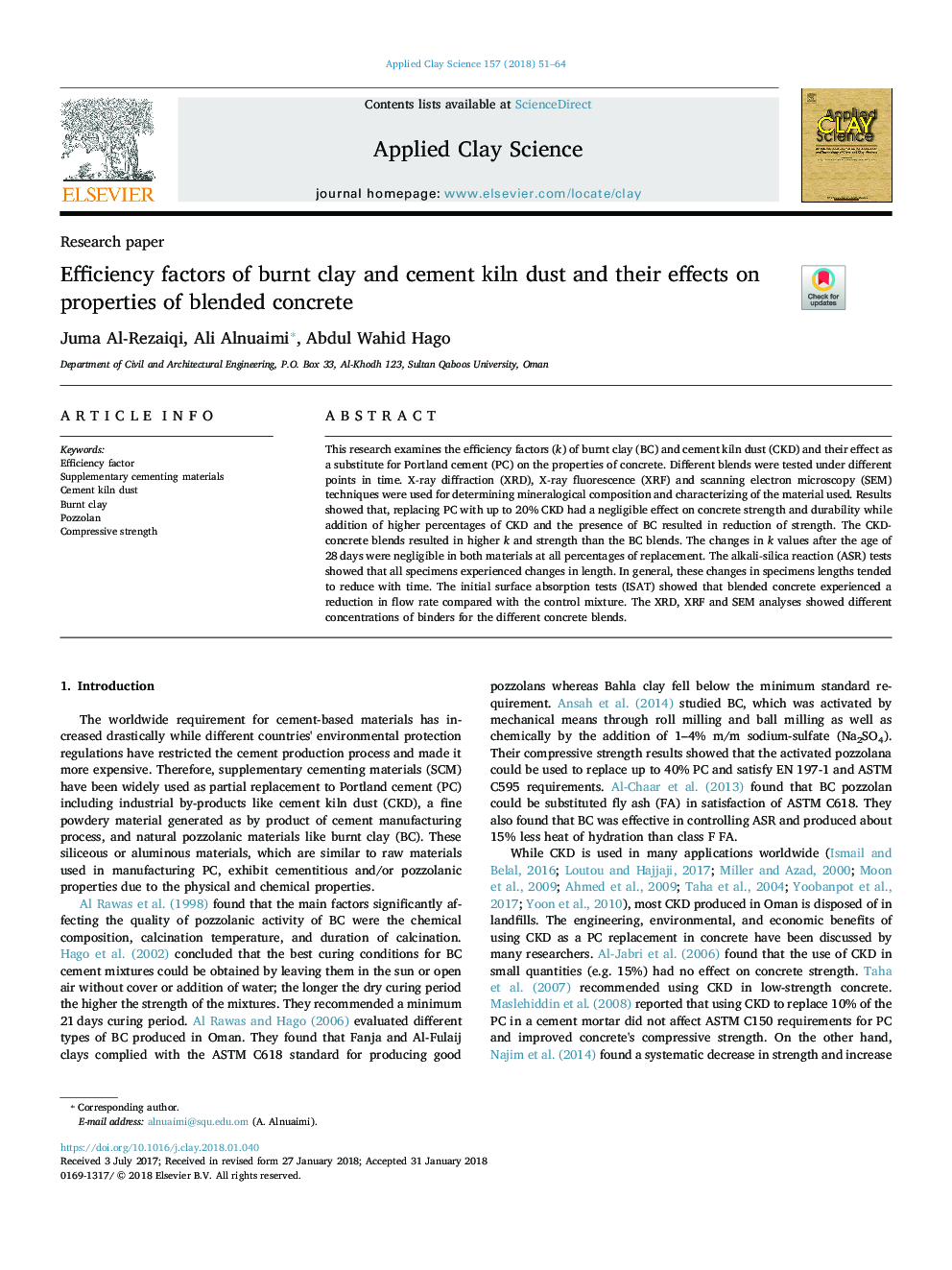| Article ID | Journal | Published Year | Pages | File Type |
|---|---|---|---|---|
| 8046007 | Applied Clay Science | 2018 | 14 Pages |
Abstract
This research examines the efficiency factors (k) of burnt clay (BC) and cement kiln dust (CKD) and their effect as a substitute for Portland cement (PC) on the properties of concrete. Different blends were tested under different points in time. X-ray diffraction (XRD), X-ray fluorescence (XRF) and scanning electron microscopy (SEM) techniques were used for determining mineralogical composition and characterizing of the material used. Results showed that, replacing PC with up to 20% CKD had a negligible effect on concrete strength and durability while addition of higher percentages of CKD and the presence of BC resulted in reduction of strength. The CKD-concrete blends resulted in higher k and strength than the BC blends. The changes in k values after the age of 28â¯days were negligible in both materials at all percentages of replacement. The alkali-silica reaction (ASR) tests showed that all specimens experienced changes in length. In general, these changes in specimens lengths tended to reduce with time. The initial surface absorption tests (ISAT) showed that blended concrete experienced a reduction in flow rate compared with the control mixture. The XRD, XRF and SEM analyses showed different concentrations of binders for the different concrete blends.
Keywords
Related Topics
Physical Sciences and Engineering
Earth and Planetary Sciences
Geochemistry and Petrology
Authors
Juma Al-Rezaiqi, Ali Alnuaimi, Abdul Wahid Hago,
